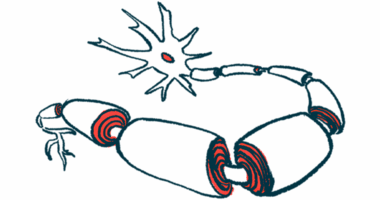AP-1 Transcription Factor Family is Critical for Healthy T-cell Development, Study Says

The transcription factor family AP-1 is crucial for the proper activation of immune T-cells, a new study shows, and this finding may have important implications for autoimmune diseases such as multiple sclerosis.
The study, titled “AP-1 activity induced by co-stimulation is required for chromatin opening during T cell activation,” was published in the Journal of Experimental Medicine.
T-cells are vital to the immune system, as they are responsible for recognizing and eliminating threats such as invading bacteria and cancer cells, as well as playing numerous other parts in coordinating immune responses.
At a basic level, T-cells travel through the body in a “naive” state; when they recognize a threat (via the binding of specialized receptors), they become activated — at which point they kill cells recognized as threats, and produce signaling molecules that drive inflammation.
This activation of T-cells is a complex process, and requires a big shift in the protein profile being made by the cell. The process is coordinated by the activity of transcription factors — proteins that play a role in transcribing DNA into RNA molecules for protein production. These factors bind to chromatin (DNA that is “bundled up” in the nucleus of the cell) and unwind it (open chromatin) to allow the transcription of relevant genes.
In the new study, researchers used a combination of computation and cell biology to determine the places where chromatin is opened during T-cell activation.
The team found that more than 70% of locations that become open during the process are bound by transcription factors from the AP-1 family. They confirmed that the AP-1 transcription factors bound to the chromatin itself using relatively new techniques called ChIP-seq (chromatin immunoprecipitation) and ATAC-Seq (Assay for Transposase Accessible Chromatin).
Researchers also demonstrated that this binding was done in conjunction with NFAT1 (nuclear factor of activated T-cells), a known binding partner of AP-1.
Furthermore, when researchers used compounds that broadly inhibited the activity of the AP-1 family, T-cells were unable to undergo normal chromatin remodeling, and were dysfunctional (were not active).
“Our findings define AP-1 as the key link between T-cell activation and chromatin remodeling,” the researchers wrote.
Interestingly, many of the locations where AP-1 transcription factors bind to chromatin are known risk loci for autoimmune diseases; that is, they are hot spots for mutations known to be associated with diseases including multiple sclerosis, inflammatory bowel disease, and allergies.
Thus, the researchers believe that the analysis of these risk loci through the lens of the new information about AP-1 could yield important insights for understanding the biology underlying these diseases — and perhaps finding treatment strategies for them.
“Our findings allow us to conduct new studies into what’s happening molecularly and mechanistically at these risk loci when the mutations are present and when they are not,” Artem Barski, PhD, researcher at Cincinnati Children’s Hospital Medical Center, and the study’s co-author, said in a news release. “Our goal is to use this mechanistic knowledge to eventually develop protective vaccines, anti-cancer immune therapies, or reduce pathologic immune responses like asthma, allergies, and autoimmunity.”
The team is now further investigating if the absence of AP-1 and its inability to bind to mutated loci contributes to the development of immune diseases.






